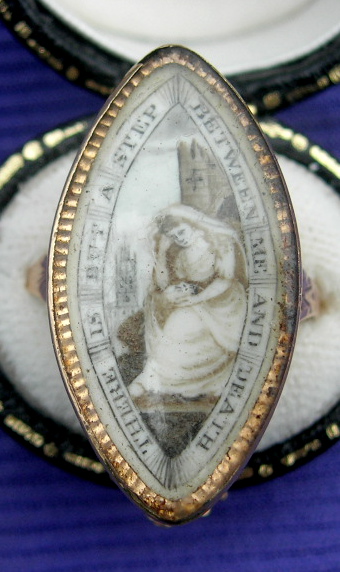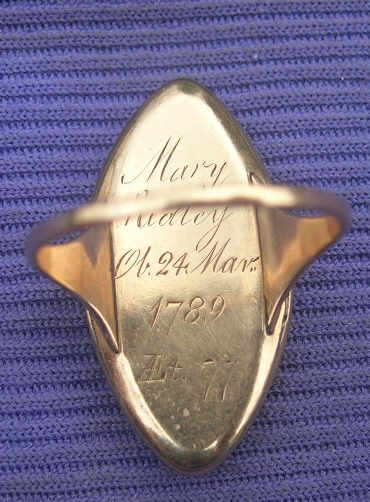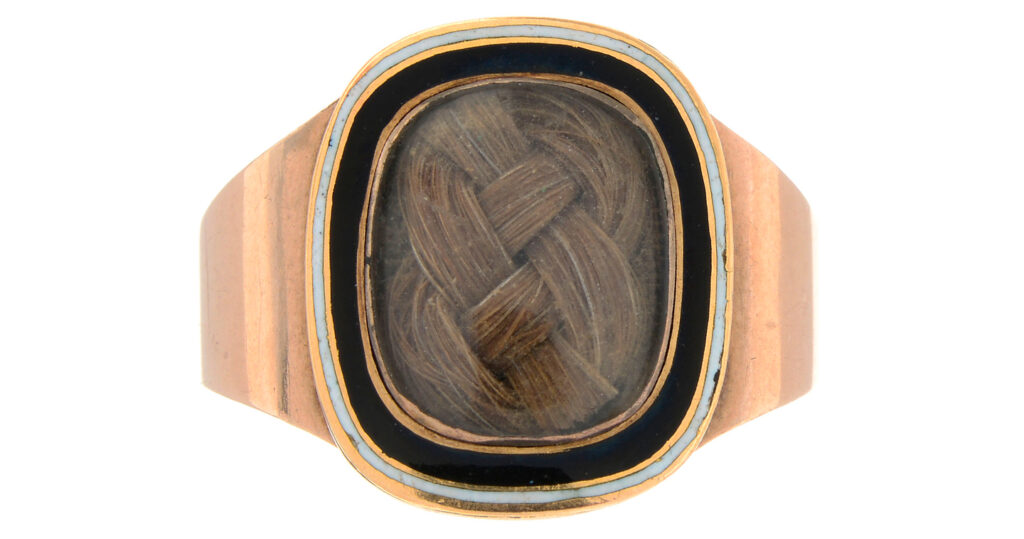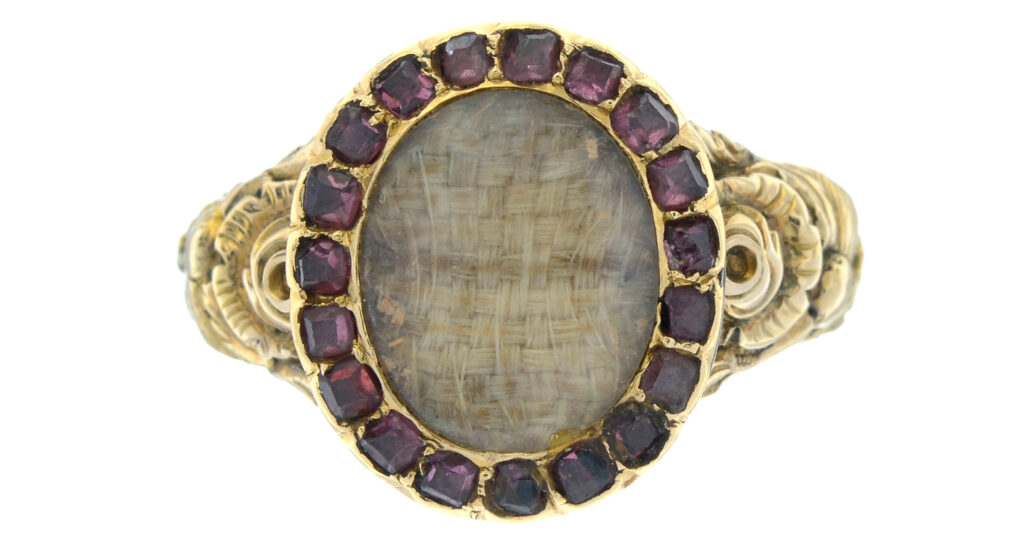There is But a Step Between Me and Death in This 1789 Ring
Here is a ring that is in particularly unique. This ring shows all the markings of being something that defies the standardisation of the Neoclassical pieces of England and takes with it the unique nature of the pieces of the European Continent.
Firstly, notice how this piece reflects the shape of the navette style of “On This Shall Dwell the tender thought” sepia mourning ring. It’s a taller style, not wider in the sides and acts in a more pointed shape of north to south than the regular navette shape.
Now, let’s take a look at the symbolism. Firstly, we have the text to note. The dedication of ‘there is but a step between me and death’ is another uniquely singular dedication that is very bold in the late 1780s, a time when most of the sepia pieces were standardised in their dedication. Look at the north and south of the sepia itself; note how the lines between the text and even the borders in the text, align the font and the shape of the ring. This isn’t standard at all, but it shows an artist accommodating the wishes of the person who commissioned the ring. There’s no true balance to the art, it’s simply split between two, three and four lines between the text for spatial area.
Inside, we have the most wonderful aspect of this ring! We have the female mourner, who is holding an object in her left arm. This has been suggested as a cat and as also a skull; the latter of which I would lean towards, though would not fit within this paradigm. Why not? Well, this is the Neoclassical era and the skull and the female mourner are almost acknowledging that they do not fit within themselves as symbols. One is from the previous era (the skull) and the other denotes a personal affection for love and mourning (the woman). For one to hold the other would not make a great deal of sense, but then we have to look at the symbolism in the background.
Yes, we’re faced with the the cross and the cathedral. Here, we have a clear denotation of ecclesiastical comeuppance; something that the Neoclassical period has interpreted from the previous Memento Mori era of having as a symbol of eventual judgement. Truly, this was the justification of the point of death and the life worth living. Yet, the Neoclassical period of the human and the person being the point of mourning should overtake this, but here we have both merged.








